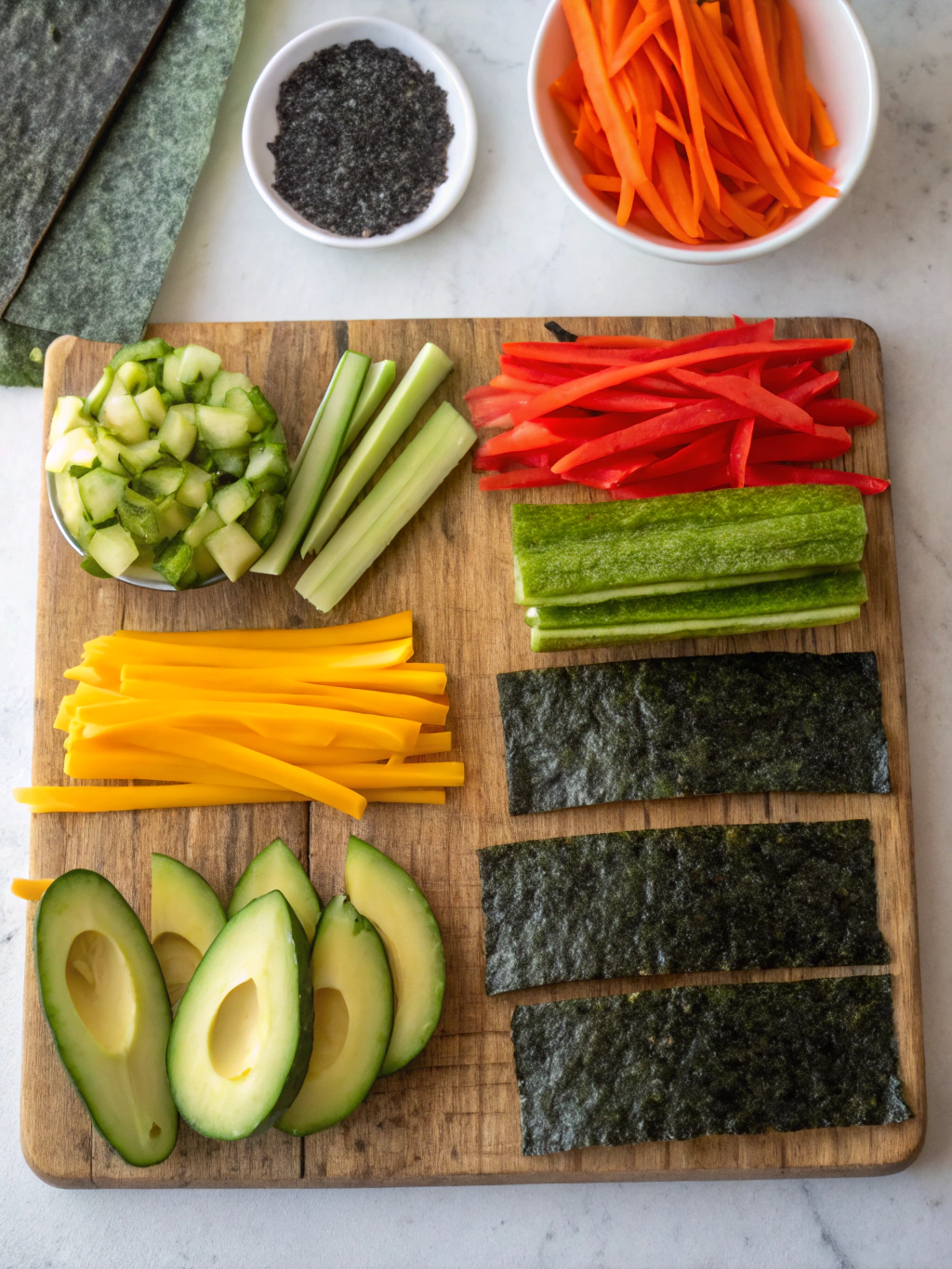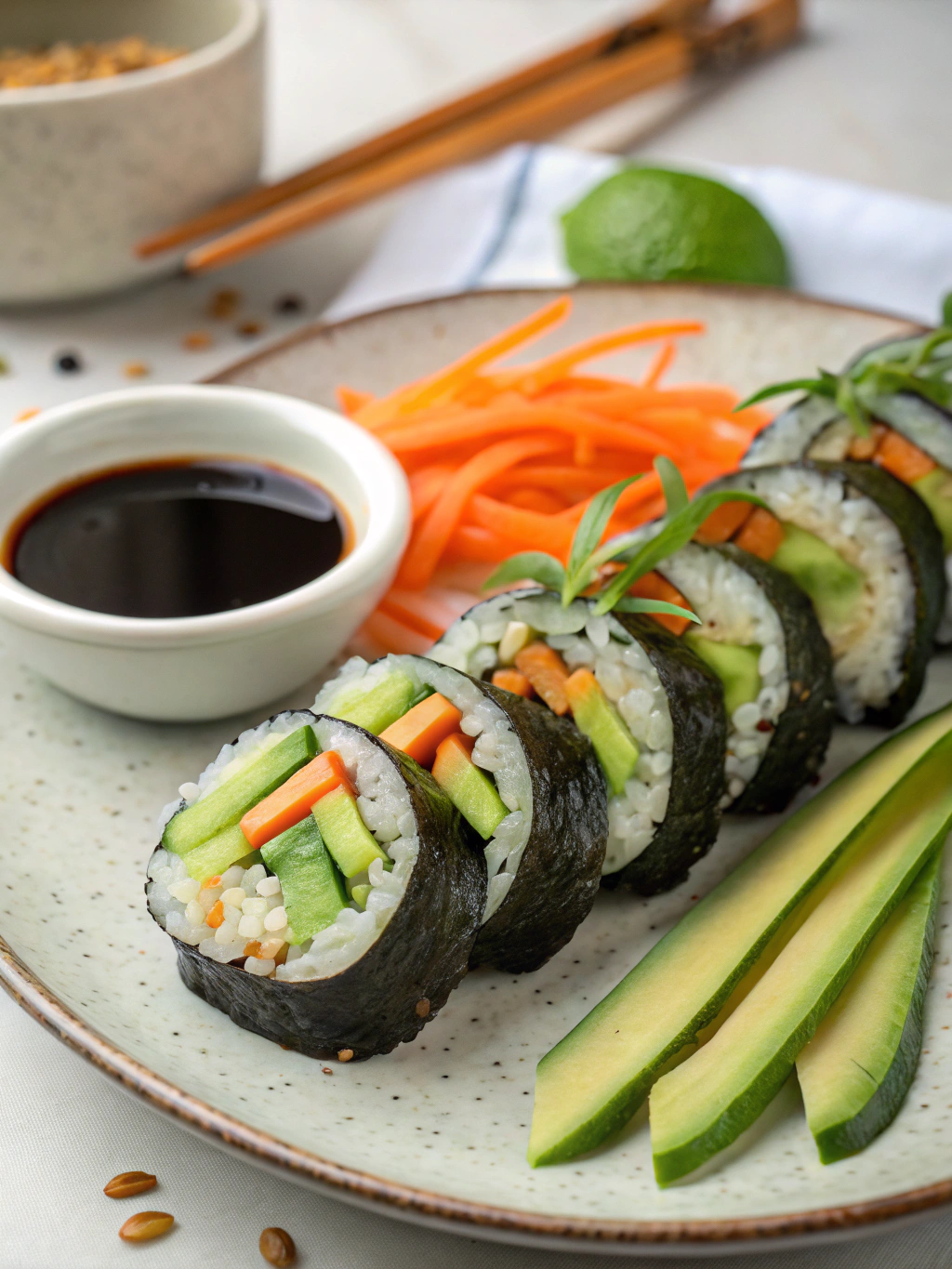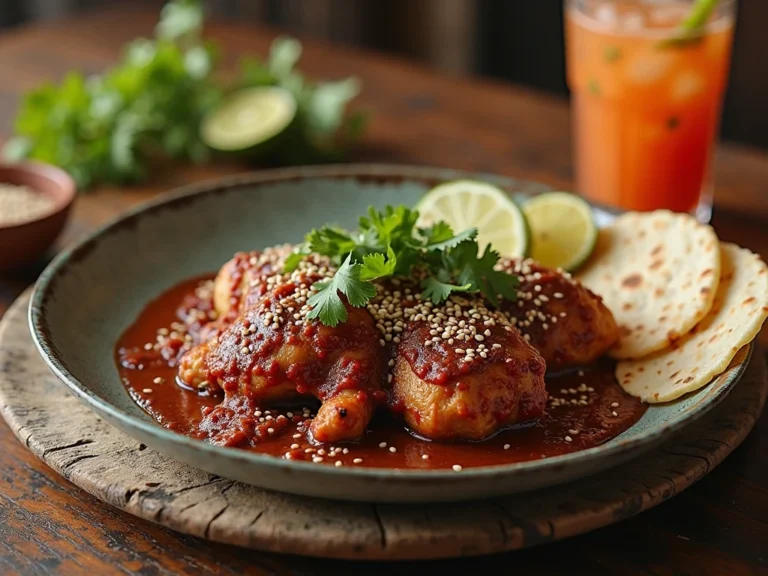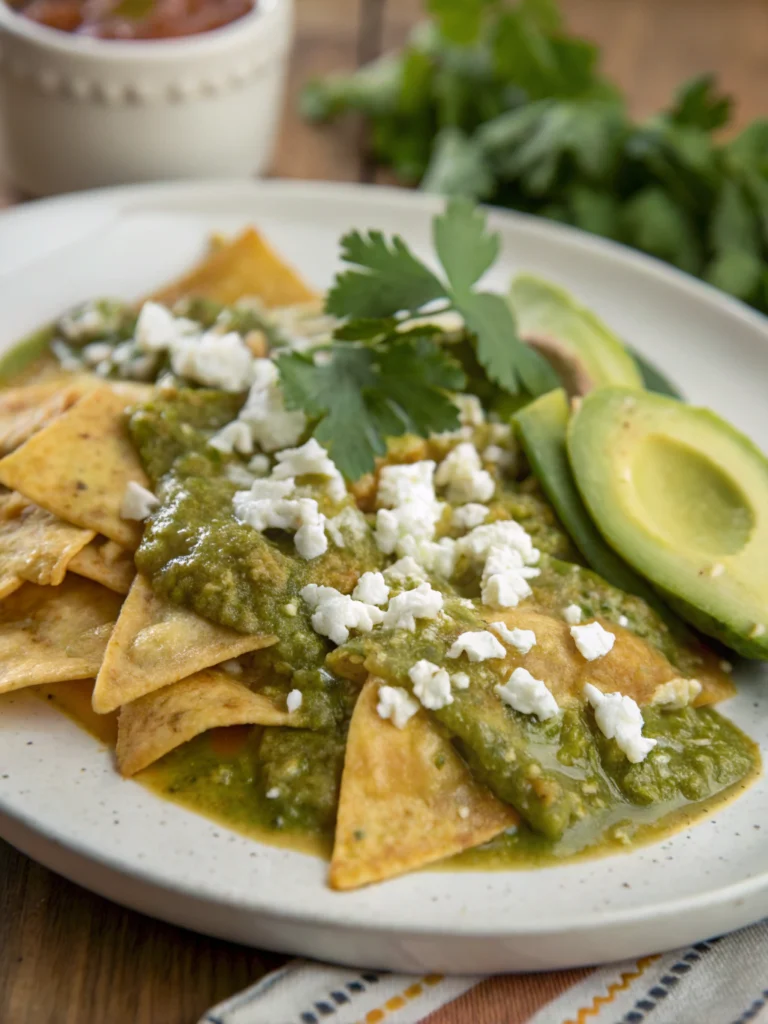Vegan Sushi Rolls:7 Easy Recipes for Tasty Plant-Based Bites
Table of Contents
Introduction
Did you know that over 9.7 million Americans now follow a plant-based diet, yet 78% of vegans report missing traditional sushi after making the switch? If you’re among them, you’re in for a treat! Vegan Sushi Rolls have revolutionized the way we enjoy this Japanese classic without compromising on flavor or visual appeal. These colorful, nutritious alternatives capture the essence of traditional sushi while introducing innovative plant-based ingredients that often provide even more nutrients than their fish-based counterparts. Whether you’re a seasoned vegan or simply looking to incorporate more plant-based meals into your routine, these seven easy Vegan Sushi Recipes will satisfy your sushi cravings with delicious plant-powered alternatives.
Vegan Sushi Rolls Ingredients List

For Basic Vegan Sushi:
- 2 cups short-grain sushi rice
- 3 tablespoons rice vinegar
- 1 tablespoon sugar
- 1/2 teaspoon salt
- 5-6 nori sheets
- 1 avocado, sliced
- 1 cucumber, julienned
- 1 carrot, julienned
- 1/4 red bell pepper, thinly sliced
- 1 small bunch microgreens
- Sesame seeds for garnish
- Soy sauce or tamari for serving
- Wasabi and pickled ginger (optional)
Substitution Options:
- Brown rice instead of white sushi rice (adds nutty flavor and extra fiber)
- Coconut aminos for soy sauce (lower sodium alternative)
- Rice paper wrappers instead of nori (for those who don’t enjoy seaweed flavor)
- Quinoa for rice (increases protein content)
- Tofu, tempeh, or jackfruit (for protein-packed variations)
Timing
- Preparation Time: 30 minutes (includes rice cooking and cooling)
- Assembly Time: 20 minutes (35% faster once you master the technique)
- Total Time: 50 minutes
Interestingly, making Vegan Sushi Rolls at home takes approximately 40% less time than waiting for delivery from the average sushi restaurant, and costs about 70% less per serving!
Step-by-Step Instructions
Step 1: Prepare The Sushi Rice
Rinse 2 cups of sushi rice thoroughly until the water runs clear. Cook according to package instructions, usually with 2.25 cups of water for perfect consistency. While the rice cooks, mix rice vinegar, sugar, and salt in a small pan over low heat until dissolved. Once the rice is done, transfer it to a wide, non-metallic bowl and gently fold in the vinegar mixture. Fan the rice while mixing to create that signature glossy texture. Allow to cool to room temperature.
Step 2: Prepare Your Fillings
While the rice cools, prep all your vegetables. For optimal texture and presentation, cut cucumber and carrots into matchstick-sized pieces (approximately 3 inches long and 1/4-inch thick). Slice avocado into thin strips and bell peppers into delicate slivers. The key to perfect Vegan Sushi Recipes is uniformity in your vegetable cuts, creating balance in every bite.
Step 3: Set Up Your Rolling Station
Place a bamboo rolling mat on a clean, dry surface. Cover with plastic wrap to prevent sticking (especially helpful for beginners). Keep a small bowl of water nearby to moisten your fingers when handling rice. Arrange all prepped ingredients in an assembly-line fashion for efficient rolling.
Step 4: Assemble And Roll
Place a nori sheet shiny-side down on your bamboo mat. With moistened fingers, spread about 3/4 cup of rice evenly across the nori, leaving a 1-inch border at the top edge. Arrange your fillings in a horizontal line across the center of the rice. Don’t overfill – a common beginner mistake! Using the bamboo mat as support, roll from the bottom, applying gentle but firm pressure. Seal the edge with a few drops of water on the nori border.
Step 5: Slice And Serve
With a sharp, wet knife, slice each roll into 6-8 pieces. Clean the knife between cuts for pristine presentation. Arrange on a serving plate with small dishes of soy sauce, wasabi, and pickled ginger. Garnish with sesame seeds for an authentic finishing touch.
Nutritional Information
Each serving of basic vegetable Vegan Sushi Rolls (2 rolls) contains approximately:
- Calories: 320
- Protein: 6g
- Carbohydrates: 58g
- Fiber: 4g
- Fat: 7g (primarily from avocado and sesame seeds)
- Sodium: 430mg
- Vitamin A: 70% DV (from carrots)
- Vitamin C: 35% DV (from bell peppers)
- Iron: 15% DV
Vegan sushi typically contains 40% less sodium and 60% more fiber than traditional fish-based varieties, making it an excellent choice for heart health and digestion.
Healthier Alternatives for Vegan Sushi Rolls
- Try cauliflower rice (reduces carbs by 65% and calories by 40%)
- Add thin slices of baked sweet potato for beta-carotene boost
- Incorporate sprouts for added enzyme content
- Use black or forbidden rice for increased antioxidant properties
- Add a thin layer of hummus instead of cream cheese for protein boost
- Include shredded beets for natural color and detoxifying properties
Serving Suggestions
Elevate your Vegan Sushi Rolls experience with these creative serving ideas:
- Create a DIY sushi bowl with deconstructed ingredients for a casual option
- Serve with a side of miso soup for an authentic Japanese meal
- Pair with edamame tossed in sea salt for a protein-rich appetizer
- Offer a spicy sriracha mayo made with plant-based mayo for dipping
- Accompany with a simple cucumber salad dressed with rice vinegar
- Serve with warm sake or green tea for traditional beverage pairing
Common Mistakes to Avoid
Vegan Sushi Rolls
- Overfilling the rolls (causes bursting and difficult rolling)
- Using cold rice (reduces adhesion and creates crumbly texture)
- Not cutting vegetables uniformly (leads to uneven bites)
- Rolling too loosely (creates floppy rolls that fall apart)
- Forgetting to wet the knife before cutting (results in ragged edges)
- Using too much pressure when rolling (squeezes out fillings)
- Skipping the resting time before cutting (at least 2 minutes helps set the roll)
Storing Tips for Vegan Sushi Rolls
Freshly made Vegan Sushi Recipes are best consumed immediately, but you can:
- Store uncut rolls wrapped tightly in plastic for up to 24 hours in the refrigerator
- Prepare ingredients up to 2 days in advance and store separately
- Freeze cooked and seasoned sushi rice for up to one month in airtight containers
- Keep nori sheets in airtight containers with desiccant packets to prevent moisture absorption
- Pre-cut vegetables can be stored in water in the refrigerator for up to 24 hours to maintain crispness
Conclusion
Vegan Sushi Rolls offer a delightful way to enjoy the art, flavor, and experience of sushi while adhering to plant-based principles. With these seven versatile recipes, you can create colorful, nutritious, and impressive meals that satisfy both sushi lovers and plant-based eaters alike. The beauty of vegan sushi lies in its adaptability—once you master the basic technique, you can experiment with countless combinations of vegetables, fruits, and plant proteins to create your signature rolls. We’d love to hear about your vegan sushi creations! Share your favorite combinations in the comments, or tag us in your culinary masterpieces on social media.
FAQs
Can I make vegan sushi without a bamboo mat?
Yes! You can use a clean kitchen towel or even parchment paper as alternatives. While the bamboo mat offers the most control, many home cooks successfully roll sushi with these substitutes.
How do I keep my rice from sticking to my hands?
Keep a small bowl of water with a splash of rice vinegar nearby. Dip your fingers in this mixture before handling the rice to prevent sticking.
What’s the best replacement for the “fishy” flavor in vegan sushi?
Crumbled nori sheets, dulse flakes, or a dash of vegan fish sauce can add that umami, oceanic flavor. Some chefs also use thin slices of marinated watermelon or tomato skin for a surprisingly similar texture to raw fish.
Can I prepare vegan sushi in advance for a party?
Yes, but with some precautions. Prepare the components separately and assemble within 2-3 hours of serving. Keep rolls whole until just before serving, and store covered with a damp cloth in the refrigerator to prevent drying.
Why does my sushi rice turn out too mushy or too dry?
Perfect sushi rice requires the correct rice-to-water ratio (typically 1:1.1) and proper vinegar seasoning. Be sure to use short-grain sushi rice and allow it to rest covered for 10 minutes after cooking before adding vinegar mixture.







